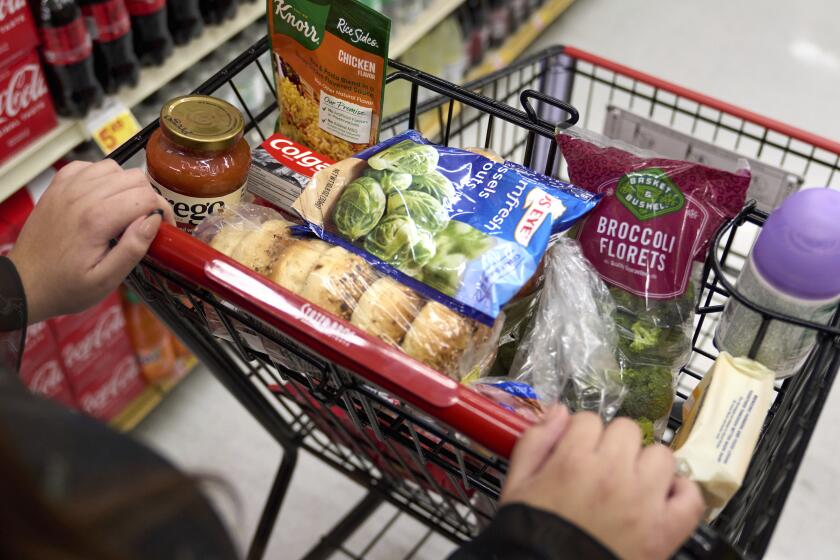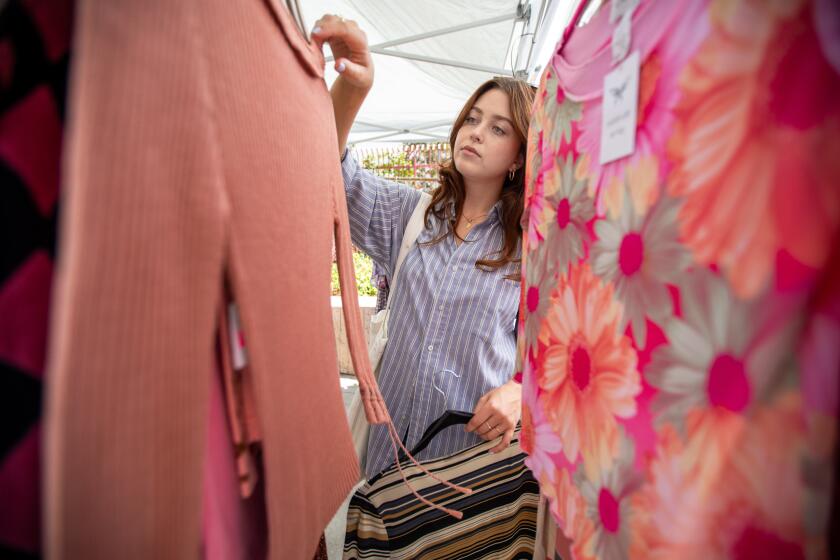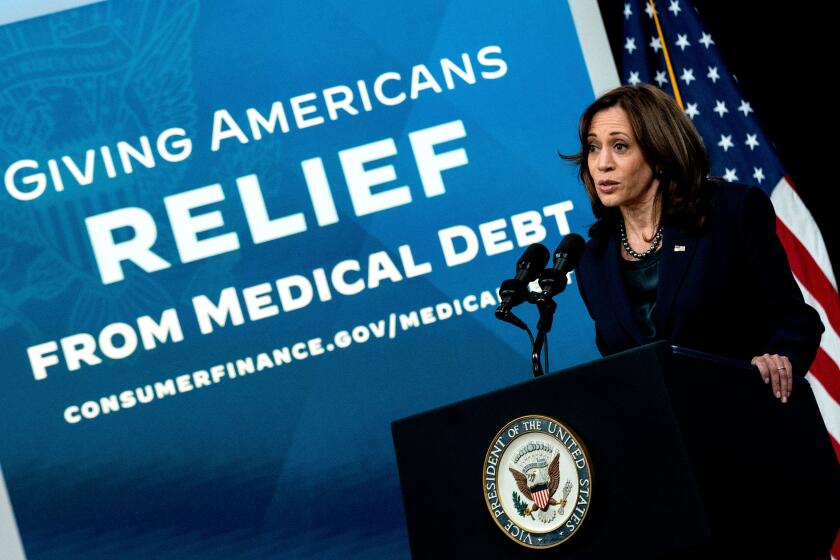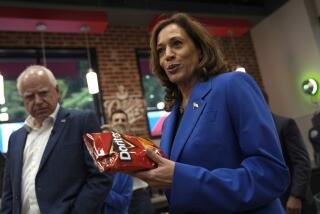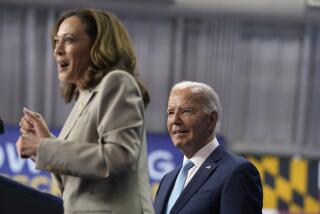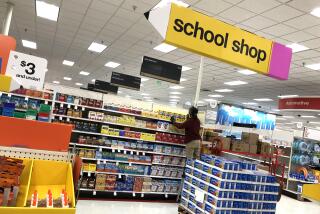$30 water bottles. $20 for paper. The sticker shock is real this school shopping season
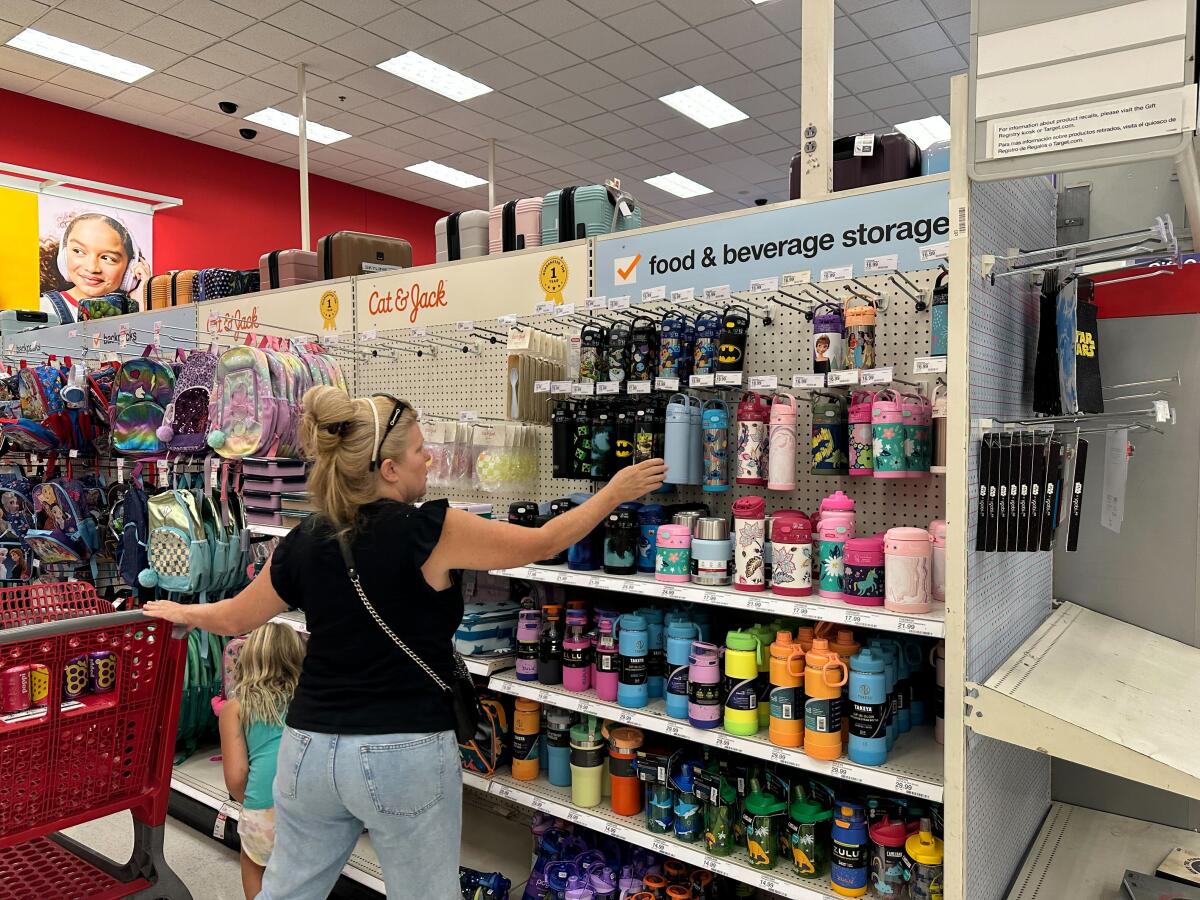
Despite hopes that high inflation is cooling, Americans are expected to spend a record amount on school supplies this year, and many families in Los Angeles are feeling the squeeze.
At Target and Walmart stores over the weekend, children and their parents perused the aisles for their back-to-school essentials, such as pencils and glue sticks. For some, excitement quickly turned into negotiation.
Shauna McDonnell, 49, had to put her foot down with her 6-year-old, Willow, who begged for a $30 water bottle at Target in Burbank.
McDonnell said prices have been “pretty good” at Target, but she finds herself debating whether Willow, who is about to start first grade at a public school, needs all new products.
“Do I make her use the ones at home? There’s nothing wrong with them. They’re not broken,” McDonnell said.
The water bottle, for one, did not make the cut.
“I think the water bottles are probably the biggest inflated product,” McDonnell said.
Back-to-school spending for K-12 students is expected to total $41.5 billion, up from a previous high of $37.1 billion in 2021, according to a survey by the National Retail Federation and Prosper Insights & Analytics. The annual survey tracks consumers’ planned spending for each school year in the categories of school supplies, electronics, clothing and accessories, and shoes. The survey found that demand for electronics is helping drive up spending.
Families with children in elementary, middle and high schools expect to spend an average of $890.07 on back-to-school items this year, the survey found. It also noted that, as of early July, 55% of consumers had already begun purchasing items for the school year, a number in line with last year’s data but up from 44% in 2019.
Katherine Cullen, vice president of industry and consumer insights at the National Retail Federation, said this demonstrates consumers’ “value mind-set.”
Consumers “might feel comfortable spending record amounts on back-to-school, but they are looking to make every dollar count,” she said. “So they are starting earlier to take advantage of sales and deals, they are shopping around more, they may be a little less brand loyal.” Cullen added that shoppers are more willing to try private label brands — or store brands — this year.
This more agnostic approach to brands and where to shop has been trending in other sectors, such as groceries, as consumers are strategizing how to stretch their dollar to cope with still-high inflation.
Consumers are switching grocery stores, brands and ingredients as they try to cope with the cost of food.
At a Walmart in Burbank on Sunday, people navigated through busy aisles under dim lighting to get their children supplies. Clarito Villanueva, 47, shopped with his four daughters, three of whom are going back to private school this month. The school-age children ran through the aisles with their school supply lists crinkled in their hands, waiting for Villanueva to approve or reject the items they selected.
With rising costs, Villanueva has found himself saying “no” more often. He is looking for deals but also wants to buy high-quality items.
Backpacks and lunchboxes have been the most expensive items, even the “basic” ones, Villanueva said.
“I have three kids [in school], so it’s going to be costly,” Villanueva said.
Any stigma of buying fashion secondhand is gone. Shoppers are running mini resale businesses as the investment value of certain luxury brands has soared.
Some parents also have found themselves subsidizing classroom costs in addition to buying supplies for their child, including Alberto Villasenor, 44, who shopped for his 5-year-old son Riot, at a nearby Target.
It’s his second time back-to-school shopping for Riot, who is going into kindergarten at a public school, and he has noticed that the prices of many items have gone up this year.
“I mean, everything’s going up now,” Villasenor said, adding that “there’s just more rising costs.”
Villasenor does not expect to spend more than $150 on school supplies for Riot, but the costs don’t stop there. Last year, Riot’s public school asked for parents to donate classroom supplies, such as markers, so he’s buying extra in anticipation of another call-out this year. He also needs to buy new clothes for his son.
“So, it’s just buying up more extra than what you’re expecting,” Villasenor said.
Although shoppers seem willing to spend more than in previous years, their dollars aren’t going as far. And some see school supplies as essential items that they aren’t willing to cut back on.
The cost of essential school supplies has gone up noticeably since last year, according to data provided to The Times by market analytics firm NielsenIQ.
Writing tools and supplies — including crayons, highlighters, pens, and pencils — have increased an average of 18.5% in the last 10 months. (The Times used NielsenIQ data to calculate the percent change in the average unit price from the four-week period that ended Sept. 3, 2022, compared with the four-week period that ended July 1, 2023.)
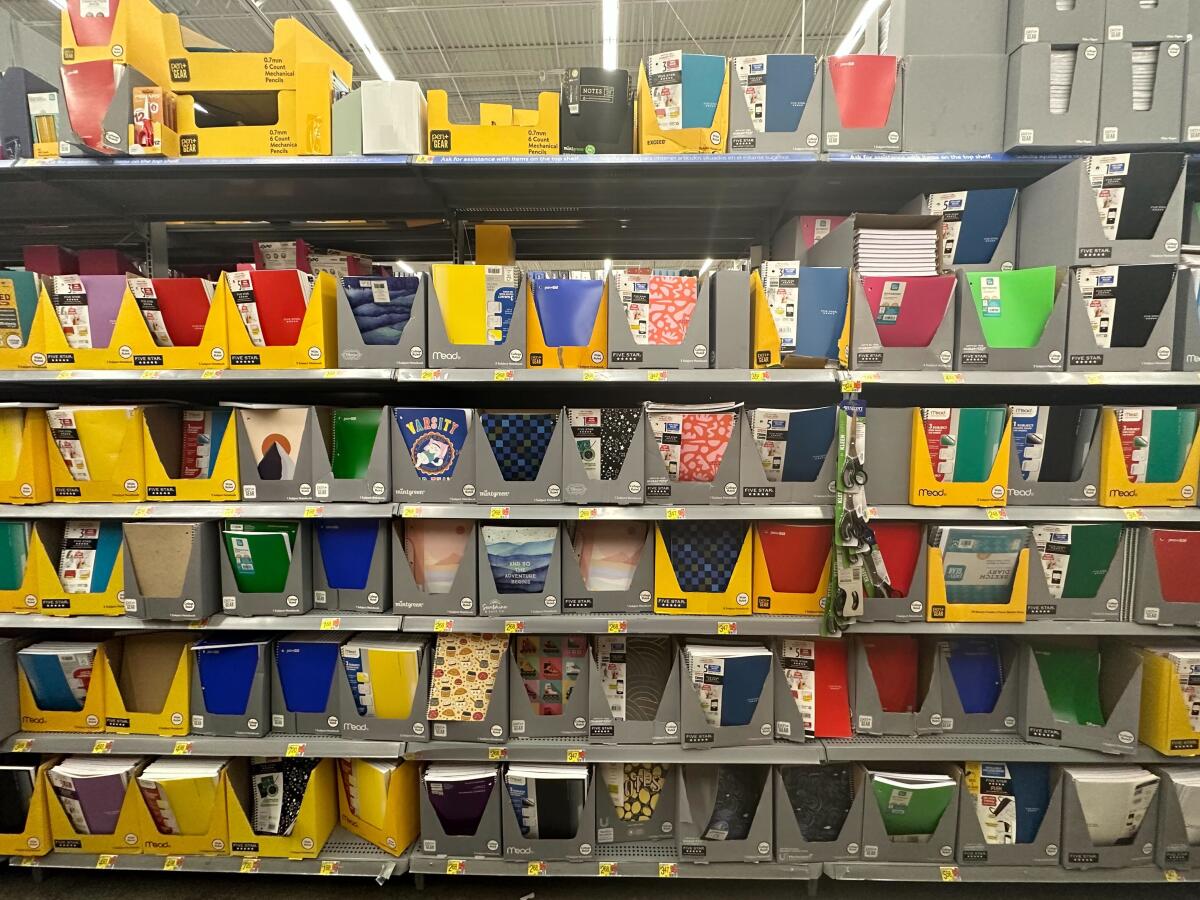
Paper goods have experienced even more dramatic price surges. The costs of planners, binders and folders have gone up an average of 48.5% in that same period. The prices of “paper and forms” for school and office have jumped 80%.
Such prices would have been unfathomable just a few years ago. In August 2018, a pack of pencils cost $2.23, compared with $3.24 in June 2023 — a 45.3% increase. Concurrently, lunchboxes jumped from an average price of $7.87 to $12.83, an increase of 63%.
One in 10 residents in Los Angeles County are burdened by medical debt. And the uninsured aren’t the only ones vulnerable to debilitating health bills.
Teachers are feeling the squeeze too. To help fund her classroom’s supplies for the coming school year, Temecula fourth-grade teacher Kinsey Abt hopes that Amazon can help.
Abt, 25, is one of tens of thousands of teachers this year who have created an Amazon “wish list” — a personalized online registry filled with her classroom essentials for the upcoming school year.
Abt has shared her link with friends, family and even Instagram influencers in the hopes that some will purchase essential items. Sharing her wish list with an influencer, she hopes, could attract some of their followers to chip in.
“I probably will just keep posting my list and hoping for donations, and then just kind of chipping away at it myself until I can get what I really, really need, and then obviously the extras just as I have the money for them,” she said.
The practice of educators creating digital wish lists has grown in popularity in recent years as teachers increasingly dip into their own wallets to make ends meet in their classrooms and the cost of school supplies has soared. Abt says that every teacher she knows has Amazon lists that they try to circulate far and wide before the school year starts.
Abt’s school reimburses teachers for as much as $250 of their classroom costs annually, and although she is grateful for the assistance, she says that money can only go so far.
“I believe a ream of colored construction paper is like $20,” Abt said. “Like one package of paper.”
Expenses, however small, add up. Abt says “it’s really everything” together that causes her to feel an effect: notebooks, Sharpies, and whiteboard markers for her classroom on top of rising personal expenses at home, such as her weekly grocery run.
“I know that you don’t necessarily need everything in the world to teach, but it definitely helps,” she said, “and you want to be able to support the students that don’t have as much support at home.”
More to Read
Inside the business of entertainment
The Wide Shot brings you news, analysis and insights on everything from streaming wars to production — and what it all means for the future.
You may occasionally receive promotional content from the Los Angeles Times.
